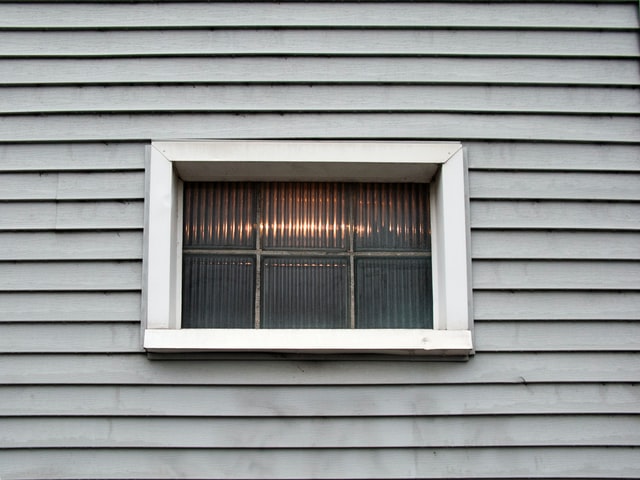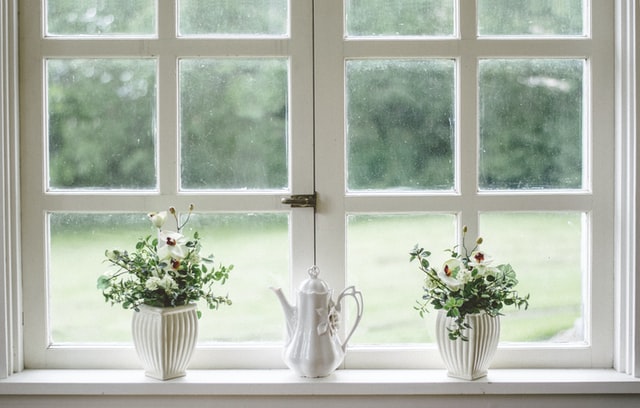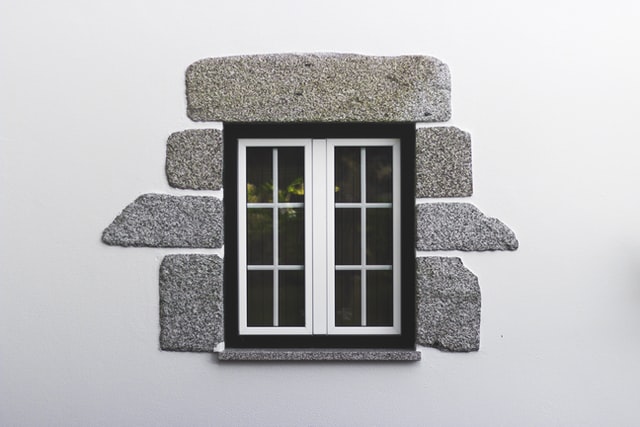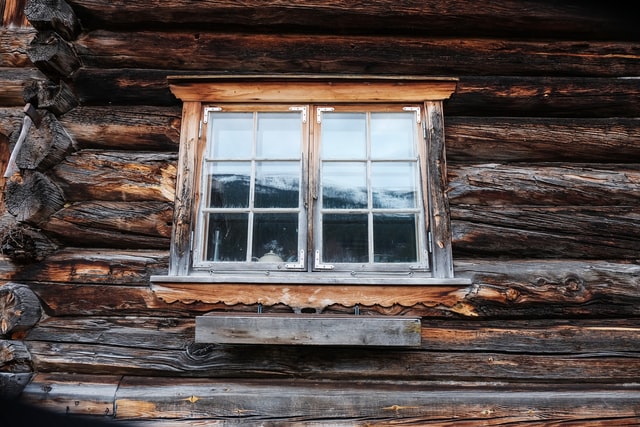Table of Contents
ToggleOverview
There are several layers of material that form the exterior of the house, and these layers serve several purposes: weatherproof the interior, allow moisture to pass through the walls, and provide an aesthetic finish to the exterior of the house. In some cases, most commonly masonry brick and stone siding, this component will also figure into the structure of the house. But in most cases, the structure of the house consists of wood framing, and none of the siding components—including brick and stone—are structural.
In general, the siding layers will consist of three components:
- Sheathing
- House wrap
- Siding

Sheathing
The sheathing is the layer closest to the interior of the house and is attached directly to the framing studs. In some cases, the sheathing is structural, while in other cases it’s just an extra layer of barrier and insulation. Common sheathing material includes plywood, water-board, OSB, or even rigid insulation in newer and more upscale houses. In older houses, you’ll see that the sheathing is just wooden boards nailed to the studs.
Unless you’re building addition or have some major wall deterioration due to moisture or termites, you probably won’t have to replace much sheathing on a typical renovation. If you do, it’s best to just match the existing sheathing currently used around the rest of the structure.
House wrap
The house wrap is the layer that sits between the sheathing and siding and has the primary purpose of being a weather-resistant barrier. House wrap should keep moisture (like rain) from permeating the interior of the structure butshould also allow water vapor to pass from the interior to the exterior of the structure. Basically, house wrap keeps moisture from building up in the interior wall cavities.
Historically, this was accomplished by covering the wooden sheathing with tar or tar paper, and more recently asphalt-treated paper. These days, house wrap is either traditional asphalt-treated paper or fiberglass, or one of many synthetic materials designed specifically for this purpose. Tyvek is the most common brand name for house wrap, and if you’ve been around new construction at all, you probably recognize the name. You will probably only be replacing house wrap when you’re replacing or adding sheathing to the house.
Siding
The siding or cladding is the layer that is seen from the exterior of the house. It acts as a weather barrier and provides a nice aesthetic look to the house. There are lots of different materials that can (and have) been used to side houses, with the most common being:
- Wood: Wood is the oldest style of siding material around. It requires more upkeep than most other siding and can be susceptible to rot, termites, and a host of other deteriorating factors. Clapboard wood siding (overlapping boards running horizontally) is historically the most common type of wood siding, but T1-11 (basically just plywood notched for aesthetics) was common in the later parts of the 20th century as well. Wood shingles or cedar “shake” was common in the northeast and is still used as replacement siding of for aesthetic touches on many houses. If you’ll be making siding repairs to a house with wood siding, try to match the siding as best you can. If you need to replace large sections of wood siding, I would suggest that you consider residing the entire house in a different material instead. New siding is a great selling feature, and old, deteriorating wood siding is not very attractive, even when painted.
- Aluminum: Aluminum siding came next after wood siding and is still used in parts of the country. It’s low maintenance and durable, but it’s also prone to denting and fading, and can be noisy during rain or windstorms. Aluminum siding can be difficult to retrofit, as matching faded colors is nearly impossible. While you can paint aluminum siding, the type of paint required is expensive and if you have major aluminum repairs, you may want to consider just residing the entire house in another siding material instead.
- Vinyl: Vinyl siding has been very popular for the past several decades, as it is low cost, low maintenance, and easy to install. On the downside, vinyl siding can be prone to cracking and fading, and is expensive to paint. It can also buckle in extreme heat, or if your barbeque grill is too close to the house. Vinyl siding is often a good choice when residing a lower-to midrange house, and it comes in a wide array of colors, so painting is not necessary. When doing vinyl siding repairs, the siding can be very difficult to match due to fading, so in many cases, the siding contractor will replace damaged siding with other siding around the house and install the new siding in less conspicuous places where the replacement is less noticeable.
- Cement composite: Cement board siding is relatively new to the market and is a very popular choice for new construction or residing projects. It is very durable, low maintenance, and is considered ‘‘green’’, as it’s made mostly from recycled materials. Hardiplank is a common brand name for cement board siding. Cement board can emulate most natural wood grain sidings, installs like wood siding, and is cut like wood siding. Because it comes in many different designs and styles and is designed to be painted, it’s a great siding material to use to patch existing wood siding—once it’s painted, it’s difficult to tell which is wood and which is cement board. Cement board siding is relatively expensive, but a great choice when residing a mid-to high-end house.
- Masonry (brick and stone): Brick and stone sliding can provide a classy touch to a house’s exterior, though repairs can be expensive, when necessary. In older brick houses, the brick may be part of the structure of the house, but in many cases, the brick is just a veneer placed in front of the wood framing to provide a specific aesthetic look. You can generally differentiate structural brick from brick veneer by looking closely at the brick. Structural brick will have layers of header brick—brick that is turned sideways (you only see the short end). Structural brick will also have brick arches over windows and other openings for structural integrity. Brick veneer will have holes—called weep holes—placed every few feet along the bottom layer of bricks.
When doing any work on structural brick, you’ll likely want to get a review by a structural engineer before starting and you’ll most certainly want to use an experienced and qualified mason. When repairing or replacing brick or stone veneers, I recommend that you use an experienced mason, though many carpenters can do very minor brickwork or repointing without much trouble.
When doing siding repair and replacement, oftentimes the biggest challenges will be to match existing siding with replacement materials. A good carpenter or siding contractor will have experience matching siding, using trim to hide transitions, using paint to obscure material differences, or moving siding pieces around to make the siding look uniform. But if you find that too much of the siding needs to be replaced, or that matching existing siding just isn’t feasible, your best options are generally either to replace all of the siding on the house or to break the house into sections, keeping existing siding on certain sections, and replacing the siding on another section. If you do this, make sure you bring in a designer who can help ensure the siding maintains good aesthetics and the different sidings don’t clash.
Just like in the roofing industry, large siding replacement jobs are generally measured in squares (a 10’x10’ section, or 100 square feet). Smaller jobs are going to be measured by the square foot, and the cost will mostly be based on the amount of time the contractor expects to spend on the job. In general, I prefer my contractors to provide all material for siding jobs, as transportation of siding can be cumbersome and difficult.


Inspection Tips
Siding is the foremost barrier between the exterior elements and your house. A well-constructed barrier will protect your investment, while a defective exterior barrier can cause ongoing headaches and expense. For this reason, any siding issues should be identified early and addressed quickly.
While siding issues are typically pretty obvious, there are some specific things you should be looking for as you walk the exterior of a property:
- For houses with wood siding, take special note of locations where water can accumulate—for example, near the ground (siding should never be touching the ground), above door frames, and below gutters and soffits. This is where you’re most likely to find rotted wood that needs to be repaired or replaced.
- For houses with vinyl siding, if you can find a location where it’s possible to peek behind the siding, you should check to ensure that there is house wrap between the siding and the sheathing. Vinyl siding is not watertight, so it should be installed over a barrier that is watertight. If there is no barrier between the vinyl siding and the house sheathing, expect this to come up on your future buyer’s inspection report.
- For vinyl siding, also take note of any impact damage. Vinyl siding can easily be damaged by hail, baseballs, and other things that hit the siding on a daily basis. While replacing damaged siding is not difficult or expensive, one issue you might run into is that older siding is often stand out. One of the tricks that good vinyl siding contractors places—like the back of the house—to repair the older siding, and then install the new siding in the less conspicuous location.
- For cement board siding, the most common issue is improper installation and nails that are either not inserted deep enough or inserted too deep(‘’countersunk’’). If the nails are not snug to the siding, this can be an opportunity for water to intrude into the nail holes, which can cause damage to sheathing and interior walls. For cement board siding, I always recommend being familiar with the installation instructions for the specific brand that is used, and to walk the house to verify that the instructions were followed.
- For hard siding surfaces including brick, stucco, and stone, identifying issues can be difficult. Water intrusion is generally not obvious from the exterior, and by the time it’s apparent from the interior, there could already by substantial damage. When inspecting hard siding surfaces such as these, look for areas of missing mortar(in the case of brick or stone) and take careful note of areas directly between window sills and gutters—two places where a lot of water tends to hit.
Life Expectancy
Different siding materials generally have differing life expectancies:
- Wood: 20-30 years.
- Aluminum: 20-30 years.
- Vinyl: 20-40 years.
- Cement composite: 40+years.
- Masonry: 100+years.
Scope of Work (SOW)
The following are the basic SOW tasks associated with siding work:
Pressure Washing
Over time, siding will pick up dirt, algae, and mold, and oftentimes a good pressure washing of the exterior of the house will make a huge difference in appearance. In fact, for many newer homes, I will pressure wash before I decide whether to repaint, as pressure washing can sometimes provide enough restoration of the exterior that painting isn’t necessary.
Pressure washing is especially helpful when dealing with vinyl or aluminum sidings, as they are generally not painted and can pick up a moldy film that makes the siding appear to be in worse condition than it actually is.
Remove OLD Siding
If you’ll be doing a major siding replacement, don’t forget to factor in the cost of removing and disposing of old siding.
Replace Sheathing
If you’ll be doing any major siding work, or will be doing an addition, you’ll likely have some sheathing that needs to be added or replaced. Whichever of your contractors is doing your siding repair should have the knowledge and ability to replace sheathing when and where necessary.
Replace House Wrap
If you’ll be doing any major siding work, or will be doing an addition, you’ll likely have some house wrap that needs to be added or replaced. Whichever of your contractors is doing your siding repair should have the knowledge and ability to replace house wrap when and where necessary.
Patch Siding
For small siding repairs, your painters or carpenters may be able to do the work more inexpensively than hiring a siding company. I will generally have my exterior painters do small siding repairs as part of their painting preparation, and because they are working ally do this work at a very reasonable price. Of course, you want to verify that whoever is doing your siding repairs is qualified, as poor siding installation can seriously detract from the aesthetic value of the house.
Replace Siding
If the amount of siding repair is significant, or if the siding on your house doesn’t measure up to surrounding or competing properties, you may want to consider residing the whole house. While expensive, new siding is a great selling point and can give your house tremendous curb appeal.
Cost Guidelines
Siding costs will vary tremendously by area, as materials prices are inconsistent around the country. Labor costs also tend to vary a lot by location, as weather conditions will greatly impact the time and effort required to deal with siding issues:
Pressure Wash
$200-$500 for whole house
Remove Old Siding
$50-$100 per square
Replace Sheathing
$40-$50 per sheet
Most sheathing on low-to mid-end houses will be OSB or plywood that comes ;in 4×8 sheets. Typical material prices run about $.35 to $50 per square foot and typical installation prices run about twice the materials cost.
Replace House Wrap
$300-$600 for whole house
Patch Siding
$3-$6 per square foot
Patching siding is going to consist of purchasing the materials and a labor price that will likely be related to the amount of time the contractor spends working on the repairs. This price is just an average for most types of siding material, but keep in mind that more expensive materials will push the price to the higher end. Also note that the same size repair to an easily accessible part of the house could be a lot more expensive if it has to be done on a very difficult to reach part of the house, as the time and risk are increased.
Replace Siding
Wood: $400-$700 per square.
Aluminum: $200-$350 per square.
Vinyl: $150-$350 per square.
Cement board: $300-$600 per square.
Masonry: $15-$25 per square foot.
Siding costs will vary by both location and siding material. Colder climates generally require better insulated siding materials, which typically cost more. In addition, most siding lines will have different levels of quality within each material. For example, low-end vinyl siding is much less expensive than high-end vinyl with an insulated backing.
Additionally, if you choose a siding material that isn’t common for your area, both material and labor costs will be significantly higher than using a common material in your area.

Determining Your Local Prices
Many siding contractors will be willing to give you ballpark estimates on siding replacement. For smaller siding jobs, you’ll likely need to have your contractor look at the work before determining a price, as the labor cost will ultimately be determined by the amount of time the contractor expects to spend.
How to Pay for the Job
For large jobs, I’ll generally expect to pay for the siding material upfront, just before the job starts. The remainder of the cost will be paid at the completion of the job.








